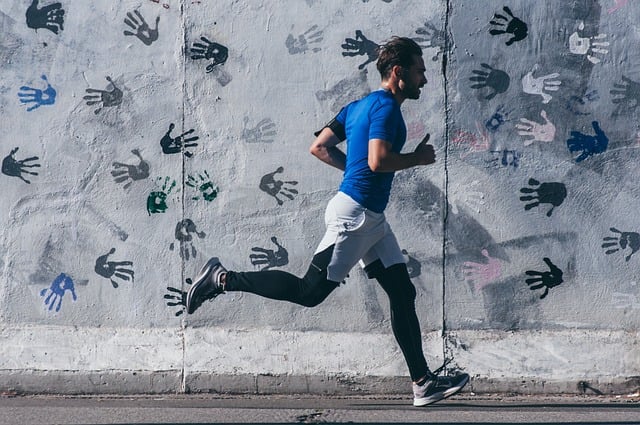Long-distance running is a rewarding yet challenging endeavor that demands significant endurance and stamina. Whether you're an experienced runner or just starting your distance running journey, understanding how to train your endurance effectively is crucial for success. One powerful tool to incorporate into your training plan is resistance bands. These can help enhance your cardiovascular and muscular endurance, improve strength, and reduce injury risk. In this post, we will delve into how resistance bands can elevate your endurance training, making your long-distance runs more efficient and enjoyable.

Effective Endurance Training Techniques
Building Cardiovascular Endurance
Building cardiovascular endurance is essential for long-distance running. This involves engaging in activities that keep your heart rate elevated over extended periods. Start with moderate-intensity exercises like jogging or cycling at a steady pace. Gradually increase your weekly mileage to allow your body to adapt. Incorporating interval training can also be beneficial. This involves alternating between high-intensity exercise and rest intervals, which can significantly improve your aerobic capacity and help you push longer distances.
Consistency is key. Aim to train at least three to four times per week. Mixing in high-intensity exercises with longer, steady runs will boost your cardiovascular health and improve your overall physical performance. Always be mindful to wear comfortable shoes and monitor your recovery time to prevent injury and stay consistent in your training plan.
Incorporating Interval Training
Interval training is a powerful method to build endurance for long-distance running. This technique involves alternating between periods of high-intensity exercise and lower-intensity recovery or rest intervals. For example, you could sprint for one minute and then jog or walk for two minutes, repeating this cycle multiple times. This type of training helps improve your cardiovascular endurance and boosts your anaerobic respiration, allowing you to handle stress better during long races.
Interval training can be tailored to fit your current fitness levels. Beginners might start with shorter high-intensity periods and longer rest intervals, while more experienced runners can increase the intensity and reduce rest periods. Incorporating interval training into your routine one to two times per week can lead to significant improvements in your stamina and speed. Always remember to warm up before starting and cool down afterward to prevent injury and aid recovery.

Maintaining a Steady Pace
Maintaining a steady pace is crucial for successful long-distance running. Running at a consistent, comfortable speed helps conserve energy, enabling you to cover longer distances without excessive fatigue. Start by determining your target pace through trial and error during training runs. Use a stopwatch or running app to monitor your pace and make necessary adjustments.
Training at a steady pace improves your muscle endurance and aerobic capacity, allowing your body to distribute blood and oxygen more efficiently. This approach is particularly beneficial for marathon running, where maintaining energy levels over long periods is key. Incorporate long runs into your weekly mileage, gradually increasing the distance to build endurance.
Listening to your body is essential. If you feel overly fatigued, slow down and find a pace that allows you to continue running comfortably. Over time, your stamina will improve, making it easier to maintain a steady pace throughout your long-distance races.
Benefits of Using Resistance Bands
Enhancing Muscle Endurance
Enhancing muscle endurance is vital for long-distance runners, and resistance bands are an effective tool for this purpose. These bands add extra resistance to your exercises, helping to build strength and improve muscle endurance without the need for heavy weights. Incorporate exercises like banded squats, lunges, and leg lifts into your routine. These activities target key muscle groups used in running, such as the quadriceps, hamstrings, and calves.
Using resistance bands can also improve your flexibility and range of motion, which can positively affect your running form and efficiency. Additionally, they are versatile and can be used for a variety of exercises, making them ideal for home workouts or when you're on the go.
Consistency is key. Aim to integrate resistance band exercises into your training plan two to three times per week. Over time, you’ll notice significant improvements in your muscle endurance, enabling you to handle the physical demands of long-distance running more effectively.

Improving Flexibility and Strength
Improving flexibility and strength is essential for long-distance runners, and resistance bands can play a crucial role in this. These bands provide adjustable resistance levels that can be tailored to your fitness level, making them versatile enough for both strength training and stretching exercises. Incorporate band-assisted stretches and dynamic movements, such as banded hip openers and shoulder stretches, to enhance your flexibility.
For strength, exercises like banded deadlifts, chest presses, and rows can help build upper and lower body strength. This added strength supports better posture and running mechanics, reducing the risk of injury.
Using resistance bands regularly can lead to significant improvements in your overall physical performance. You’ll find that increased flexibility allows for a greater range of motion, while enhanced strength helps you maintain a steady pace during long runs. Aim to include these exercises in your routine two to three times per week for optimal results.

Supporting Injury Prevention
Supporting injury prevention is a significant benefit of using resistance bands in your endurance training. These bands help to strengthen stabilizing muscles that are often neglected in traditional running workouts. Exercises like banded lateral walks, clamshells, and glute bridges target the hips, glutes, and core, enhancing your body's ability to maintain proper alignment and handle stress during long runs.
Incorporating resistance bands reduces the risk of overuse injuries by promoting balanced muscle development. They also allow for low-impact strength training, which is gentler on the joints compared to lifting weights. This makes them particularly useful for runners recovering from injuries or looking to avoid new ones.
Using resistance bands can also improve your body composition and flexibility, contributing to more efficient movement patterns. Aim to include band exercises in your routine two to three times per week to support injury prevention and ensure a long, healthy running career.
How to Get Started
Getting started with endurance training for long-distance running involves a few key steps. First, assess your current fitness level to determine a baseline. This will help you create a realistic training plan tailored to your needs. Begin with moderate-intensity workouts, such as jogging or cycling, and gradually increase your weekly mileage. Consistency is crucial, so aim to train at least three to four times per week.
Incorporate resistance bands into your routine to enhance muscle endurance, flexibility, and prevent injuries. Start with basic exercises like banded squats, lunges, and stretches. As you become more comfortable, gradually increase the intensity and variety of your workouts.
Invest in a good pair of running shoes to support your feet and reduce injury risk. Remember to warm up before workouts and cool down afterward to aid recovery and prevent injury. Tracking your progress can keep you motivated and help you make adjustments as needed. Stay consistent and patient, and you'll see significant improvements in your endurance over time.
FAQs
What is the best method to develop endurance?
The best method to develop endurance involves a combination of various training techniques. Start with steady-state cardio exercises like jogging, cycling, or swimming to build a strong aerobic base. Gradually increase your weekly mileage to allow your body to adapt to longer distances. Incorporating interval training can also be highly effective. This involves alternating between high-intensity exercise and rest intervals to boost both cardiovascular and muscular endurance.
Strength training is another crucial component. Using resistance bands for exercises like squats, lunges, and core workouts can enhance muscle endurance and reduce injury risk. Consistency is key, so aim to train at least three to four times per week, mixing different types of workouts to keep things balanced.
Finally, pay attention to your recovery. Adequate rest, proper nutrition, and hydration are essential to support your body as it adapts to increased physical demands. Combining these methods will help you build endurance efficiently and sustainably.

How long does it take to build your endurance?
Building endurance is a gradual process and varies from person to person. On average, you can start to see noticeable improvements in your endurance within six weeks of consistent training. However, the timeline can be influenced by factors such as your initial fitness level, the intensity of your workouts, and how well you recover.
Beginners might experience quicker gains initially as their bodies adapt to new physical activities. More experienced runners might see slower but steady improvements as they push their limits further. It’s crucial to stay consistent with your training plan, incorporating a mix of cardio, interval training, and strength exercises like those involving resistance bands.
Remember to listen to your body and allow adequate recovery time to prevent injury and burnout. Over time, with dedication and the right approach, you’ll find that your stamina and ability to handle longer distances improve significantly.
How many miles is considered a long run?
A long run typically varies depending on your experience level and training goals. For beginners, a long run might range from 5 to 7 miles, while for more experienced runners, it could be anywhere from 10 to 20 miles or more. Generally, a long run is any distance that challenges your current endurance and pushes you beyond your usual running limits.
Long runs are crucial for building stamina and preparing your body for the demands of long-distance races. They help improve your aerobic capacity, muscle endurance, and mental toughness. It's essential to gradually increase the distance of your long runs to avoid injury and allow your body to adapt.
Incorporate a long run into your weekly mileage, ideally once per week. Ensure you have proper hydration, nutrition, and recovery strategies in place to support your body through these longer distances. Over time, you'll find that your capacity for longer runs increases, making marathon running and other long-distance goals more achievable.









































Leave a comment
This site is protected by hCaptcha and the hCaptcha Privacy Policy and Terms of Service apply.